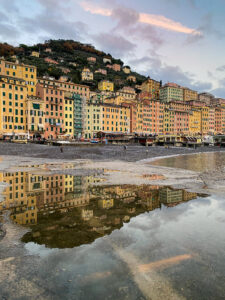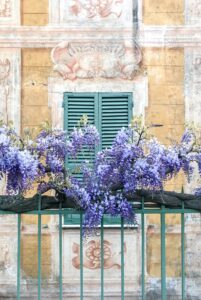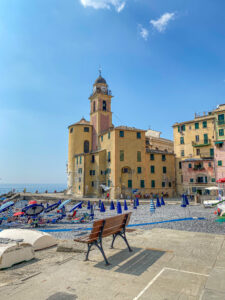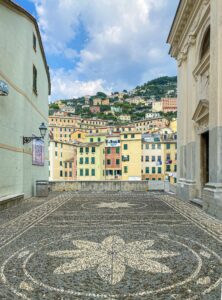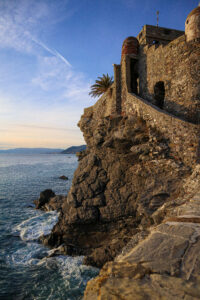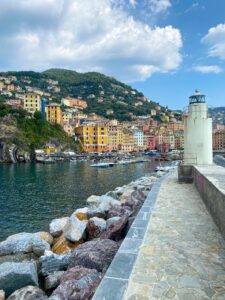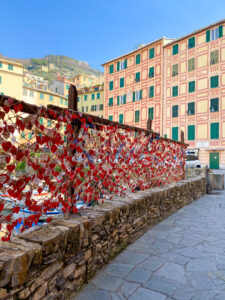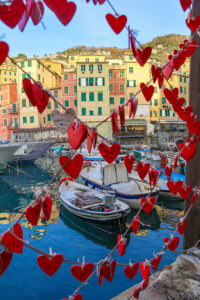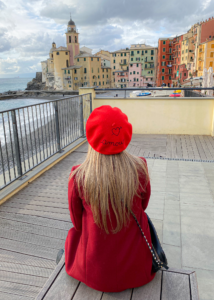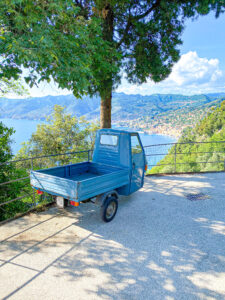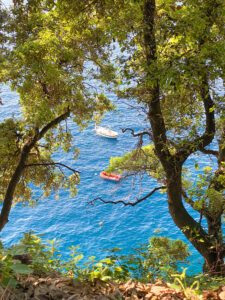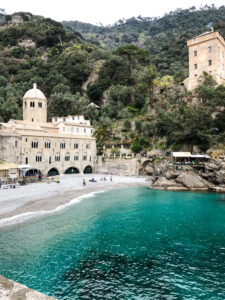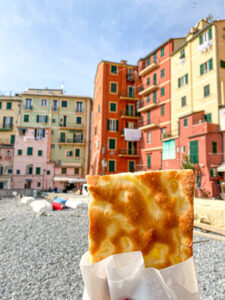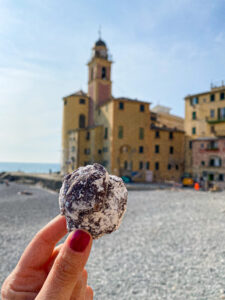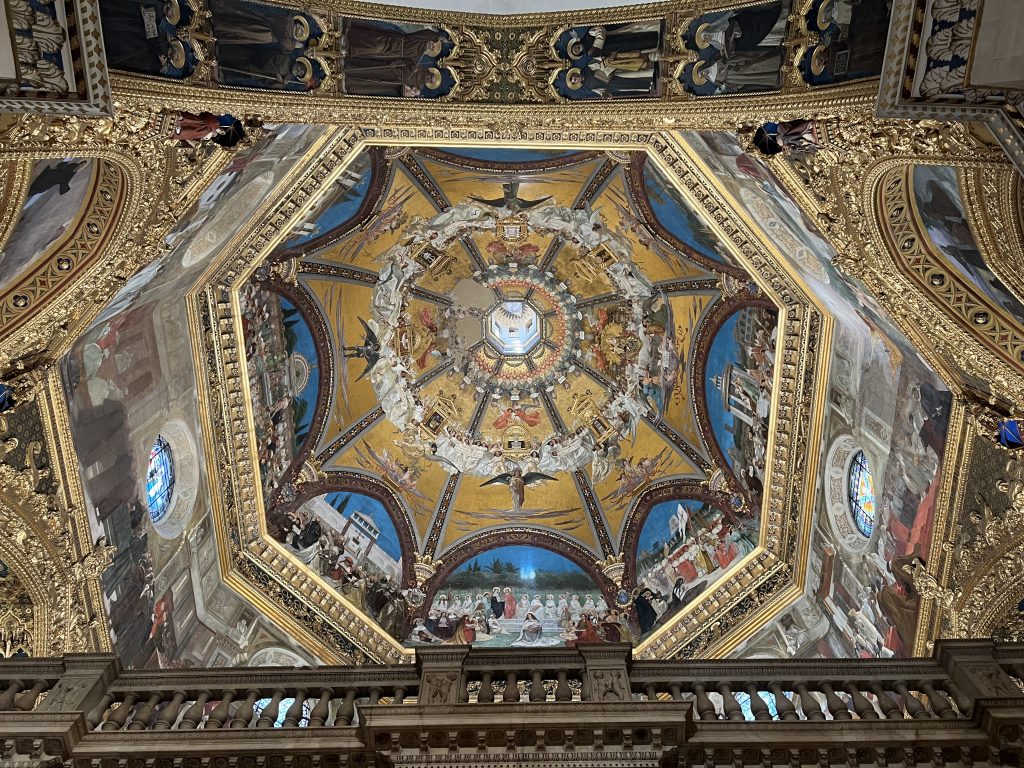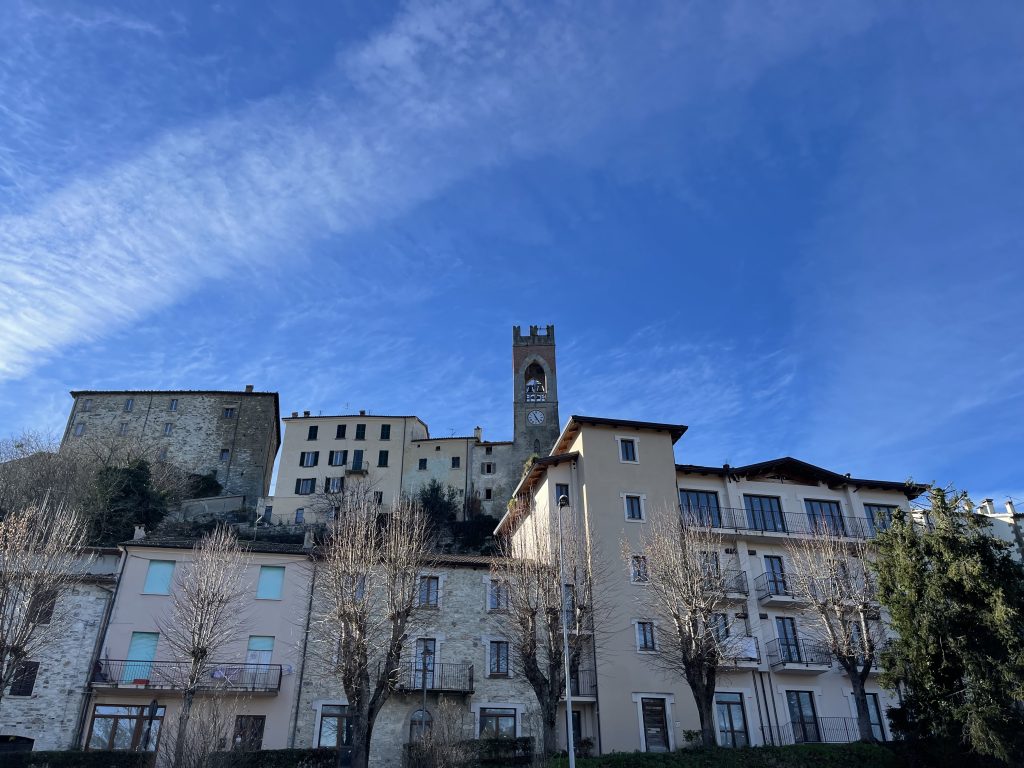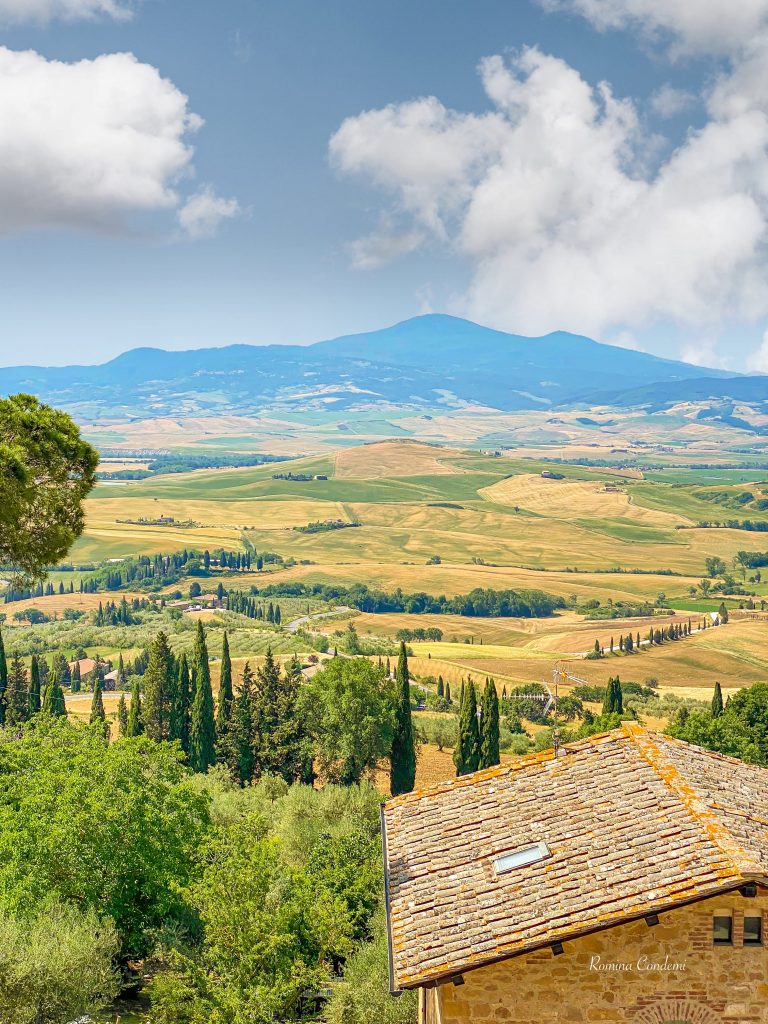Camogli is a pretty seaside village overlooking the Gulf of Paradise along the Ligurian Riviera di Levante. The etymology of the name is uncertain and fascinating: the most suggestive interpretation wants it to derive from the dialect “ca’-mugge” literally “the house of the wives” since the village was inhabited mainly by women and wives who waited for most of the year at home husbands returning from their sea voyages.
As soon as you arrive in the village you are greeted by the wonderful promenade punctuated by tall houses painted in bright shades of orange, yellow, red and green in order to be recognized even offshore by the sailors returning home after fishing.
Characteristic of this area as well as of a bit of Liguria are the typical atrompe l’oeil facades depicting windows and shutters but also architectural details such as cornices and balconies, according to a tradition attributable to the proverbial Ligurian parsimony: the presence of a smaller number of windows and royal decorations made it possible to save on taxes.
In the center of the village, overlooking the marina, stands the Minor Basilica of Santa Maria Assunta, built in the 12th century with a neoclassical facade and a richly decorated interior in Baroque style. Characteristic is the risseu churchyard, a sort of typically Ligurian mosaic made with small smooth sea or river pebbles.
Right next to the church is the Dragonara Castle, built overlooking the sea in medieval times to protect the village and the entire coast from the attacks of privateers, including the feared Turkish pirate Dragut.
A walk along the pier to the lighthouse allows you to admire Camogli in all its beauty: the town almost looks like a small nativity scene of houses that climb up the hill from the port.
Camogli is also the city of love: for some years now a net woven by fishermen and placed along the Via al Molo, in the center of the Porticciolo, welcomes personalized hearts hung by lovers to sanction their promises of love in front of the sea.
Trekking lovers can take many of the scenic trails that lead from Camogli to the nearby hamlets. Going up a staircase just outside the center, you reach the town of San Rocco and then continue towards Porto Pidocchio, a tiny harbor at Punta Chiappa, a suggestive stone tongue stretching out to the sea.
Halfway along the path you will find the splendid 12th century Romanesque church of San Nicolò di Capodimonte. For those who love diving, a visit to the Shrimp Cave in Punta Chiappa is a must, whose name derives from the presence of many and very small shrimps that completely cover the walls.In the cave you can also see small lobsters, crabs and corals. Also from San Rocco, after an hour and a half walk along the path called “delle Pietre Strette” through the Monte di Portofino, you reach the characteristic village built around the monumental complex of the Abbey of San Fruttuoso, a Benedictine monastery of the year a thousand immersed in a unique setting, between woods and sea.
And after a long journey, why not try the delicious Genoese focaccia from the Revello di Camogli bakery?
IN CAMOGLI WITH THIS LOOK
Romina Condemi
 Romina, who has always been Ligurian, loves everything related to the territory, its history and tradition. Teacher, graduated in Conservation of Cultural Heritage and specialized in History of Contemporary Art, she uses social media to promote art and historical heritage artistic but also to enhance the beauty of the landscape and the pleasures of the table. You can easily meet her in front of the sea while she photographs one of her “dishes with a view”
Romina, who has always been Ligurian, loves everything related to the territory, its history and tradition. Teacher, graduated in Conservation of Cultural Heritage and specialized in History of Contemporary Art, she uses social media to promote art and historical heritage artistic but also to enhance the beauty of the landscape and the pleasures of the table. You can easily meet her in front of the sea while she photographs one of her “dishes with a view”

